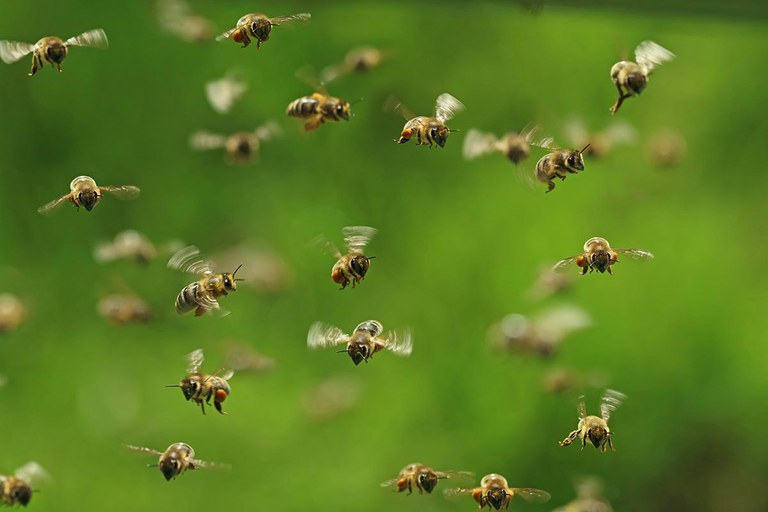Bee dispersal ability may influence conservation measures
Problem
As wild and managed pollinator populations decline due to pests, pathogens, habitat fragmentation, and climate change, how can conservation measures be planned?
Some pollinators adapt to these changes by dispersing, but studying dispersal of small insects is difficult.
Findings
An international team of entomologists is the first to identify two significant traits as indicators of a bee's ability to adapt to environmental changes.
- Body size: researchers examined the breadth of the bees' diets.
- Social behavior: researchers determined whether the bees are solitary species or work and live together as part of a group.
Impact
Because their findings confirm that these two traits can be linked to the population genetic structure, scientists can now use this research to predict which species may be at risk of local extinction.
Related Research Areas: Advanced Agricultural and Food Systems, Integrated Health Solutions, and Environmental Resilience
Research Credit
Team
- Margarita López-Uribe, Antonella Soro, and Shalene Jha
Participating Departments
Competitive Funding
- National Science Foundation; Army Research Office
Federal and State Appropriations
- USDA NIFA Hatch Project #PEN04619, Accession #1011647
Emerging Discoveries
Bee dispersal ability may influence conservation measures
Published Research
A trait-based approach to predict population genetic structure in bees
-
López-Uribe, M. M., Jha, S., & Soro, A. (2019). A trait-based approach to predict population genetic structure in bees. Molecular ecology, 28(8), 1919-1929. https://doi.org/10.1111/mec.15028
Office for Research and Graduate Education
Address
217 Agricultural Administration BuildingUniversity Park, PA 16802-2600
- Email agresearch@psu.edu
- Office 814-865-3136
Office for Research and Graduate Education
Address
217 Agricultural Administration BuildingUniversity Park, PA 16802-2600
- Email agresearch@psu.edu
- Office 814-865-3136


